As summer fades and temperatures cool, nature prepares for one of its most stunning displays—the transformation of leaves into fiery shades of red, orange, and gold. This natural phenomenon, known as fall foliage, is a highlight of the year for gardeners, landscapers, and anyone who loves the outdoors. While many trees put on a colorful show, some are particularly famous for their brilliant fall hues.
If you’re planning to add trees to your landscape or simply want to appreciate nature’s seasonal beauty, here are five trees with the best fall foliage colors, along with details on why they stand out, where they thrive, and how to care for them.
1. Sugar Maple (Acer saccharum)
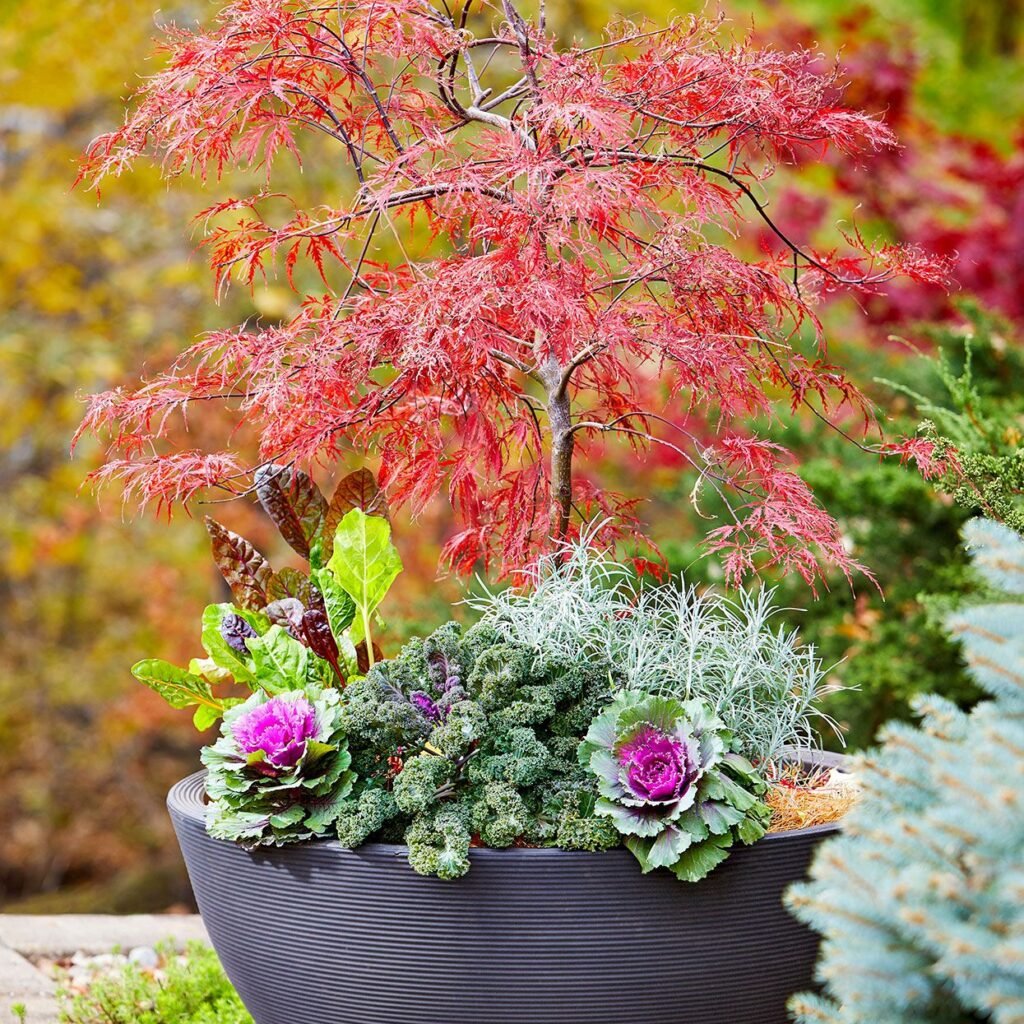
When people imagine fall foliage, the sugar maple often comes to mind first. Known for its vibrant and varied hues, this tree is a true icon of autumn landscapes.
Fall Color Display
The sugar maple puts on a spectacular show, offering a dazzling range of colors including:
- Bright orange
- Fiery red
- Golden yellow
Some trees even display multiple colors at once, creating a breathtaking gradient.
Growing Conditions
- Hardiness Zones: 3–8
- Soil: Prefers deep, well-drained soil rich in organic matter.
- Sunlight: Full sun to partial shade.
Benefits and Uses
- Provides excellent shade due to its broad canopy.
- Famous as the primary source of maple syrup.
- Can live for over 200 years with proper care.
Why It’s a Top Choice
If you want a tree that screams “fall,” the sugar maple is unbeatable. Its combination of brilliant colors and majestic size makes it a centerpiece in any landscape.
2. Red Maple (Acer rubrum)
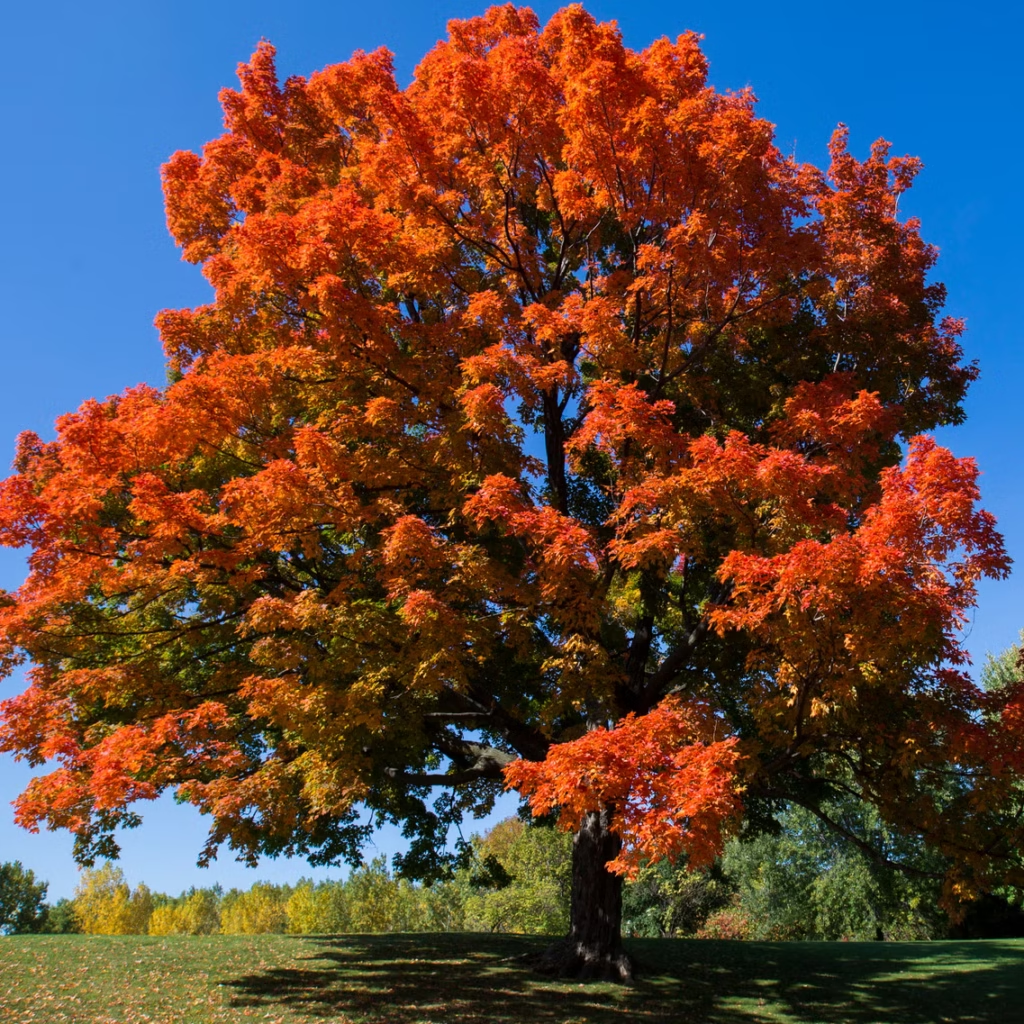
As its name suggests, the red maple is prized for its striking red tones, not only in fall but also in spring and summer.
Fall Color Display
- Displays a wide range of reds, from crimson to burgundy.
- Sometimes mixes in shades of orange and yellow for a fiery palette.
- One of the earliest trees to change color, signaling the start of fall.
Growing Conditions
- Hardiness Zones: 3–9
- Soil: Tolerates a variety of soils but prefers slightly acidic, moist ground.
- Sunlight: Full sun to partial shade.
Benefits and Uses
- Adaptable to both urban and rural environments.
- Grows quickly and provides excellent shade.
- Supports wildlife by producing seeds that feed birds and small mammals.
Why It’s a Top Choice
Red maples are highly adaptable and reliable. Their vivid scarlet leaves brighten any fall landscape, making them one of the most commonly planted ornamental trees in North America.
3. Sweetgum (Liquidambar styraciflua)
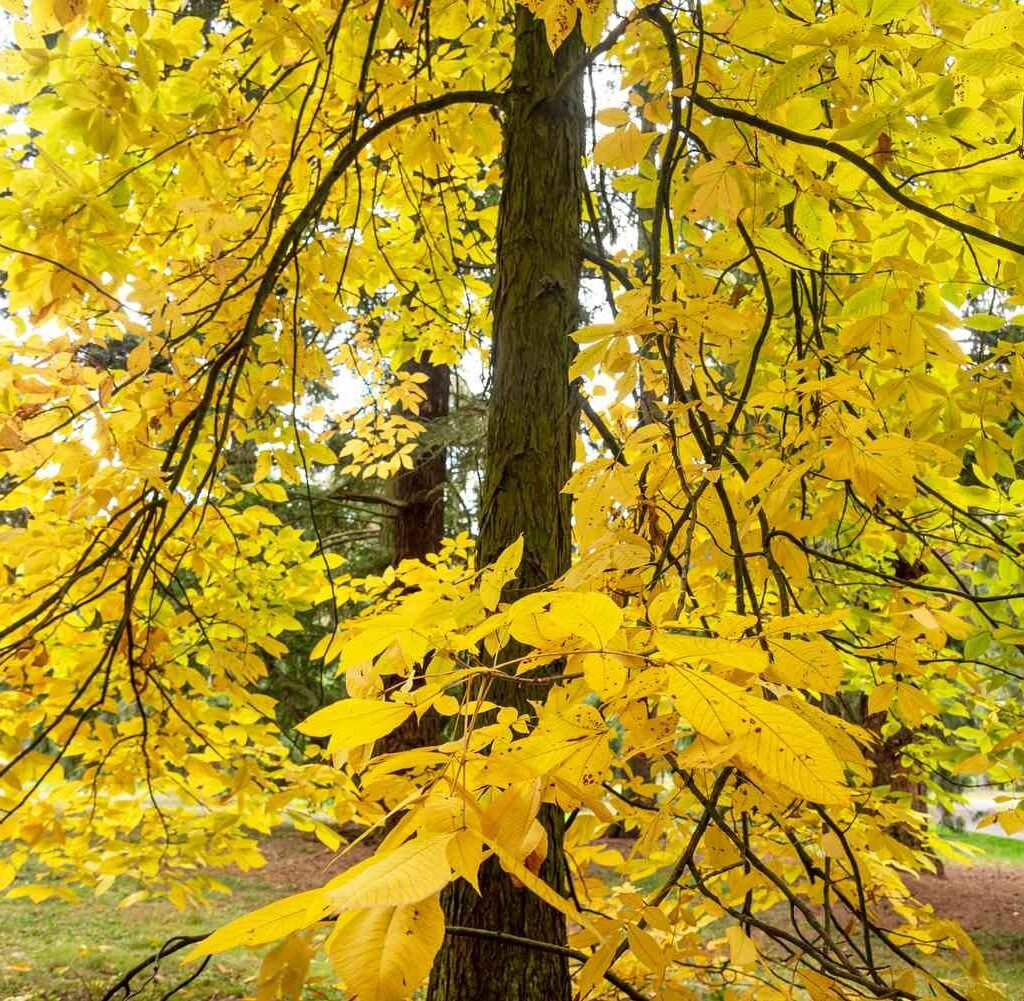
The sweetgum tree is often overlooked, but in fall, it rivals even the most famous foliage trees with its kaleidoscope of colors.
Fall Color Display
- Offers one of the most diverse fall palettes: red, orange, purple, yellow, and even pink.
- Individual leaves may display multiple colors, making the tree look like a painter’s palette.
- Colors last longer into the season compared to some other trees.
Growing Conditions
- Hardiness Zones: 5–9
- Soil: Thrives in moist, well-drained soils.
- Sunlight: Full sun is best for maximum color display.
Benefits and Uses
- Produces fragrant resin, historically used for medicinal purposes.
- Provides excellent shade and a strong vertical presence in landscapes.
- Loved by songbirds for its seeds.
Why It’s a Top Choice
Few trees can match the sweetgum’s rainbow of fall colors. If you want variety and vibrancy in your garden, this tree guarantees a show-stopping autumn display.
4. Ginkgo (Ginkgo biloba)
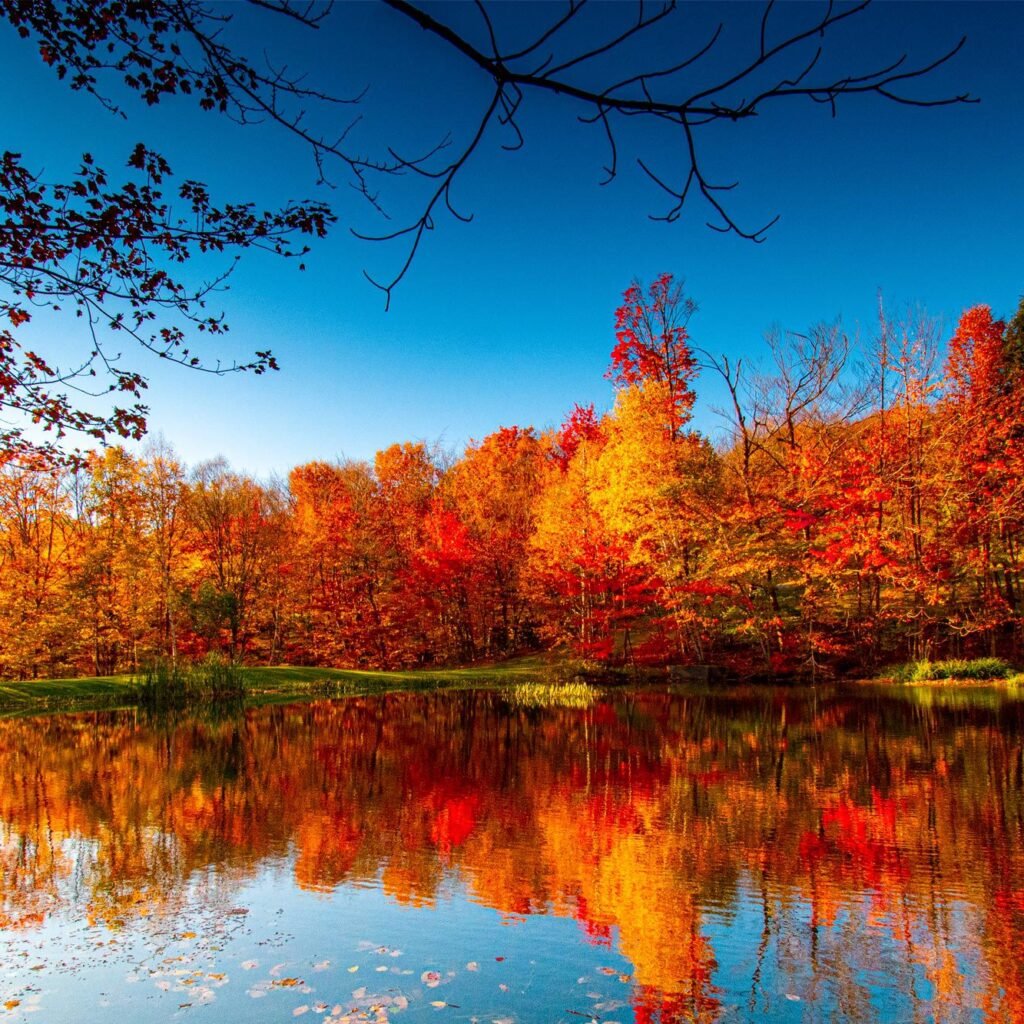
The ginkgo, sometimes called the maidenhair tree, is a living fossil that has existed for over 200 million years. Its fall color display is unlike any other.
Fall Color Display
- Transforms from bright green to a uniform, luminous golden yellow.
- Unlike other trees that change gradually, ginkgo leaves often change color all at once, creating a dramatic effect.
- When the leaves fall, they blanket the ground in a golden carpet.
Growing Conditions
- Hardiness Zones: 4–9
- Soil: Tolerates a wide range of soil types, including poor and compacted soils.
- Sunlight: Full sun is best.
Benefits and Uses
- Extremely hardy and resistant to pests, pollution, and disease.
- Long-lived, often surviving for centuries.
- Leaves and seeds have been used in traditional medicine.
Why It’s a Top Choice
The ginkgo’s golden glow is one of the most unique and consistent fall color shows in the plant world. Its ancient history and resilience make it both a practical and beautiful addition to landscapes.
5. Bald Cypress (Taxodium distichum)
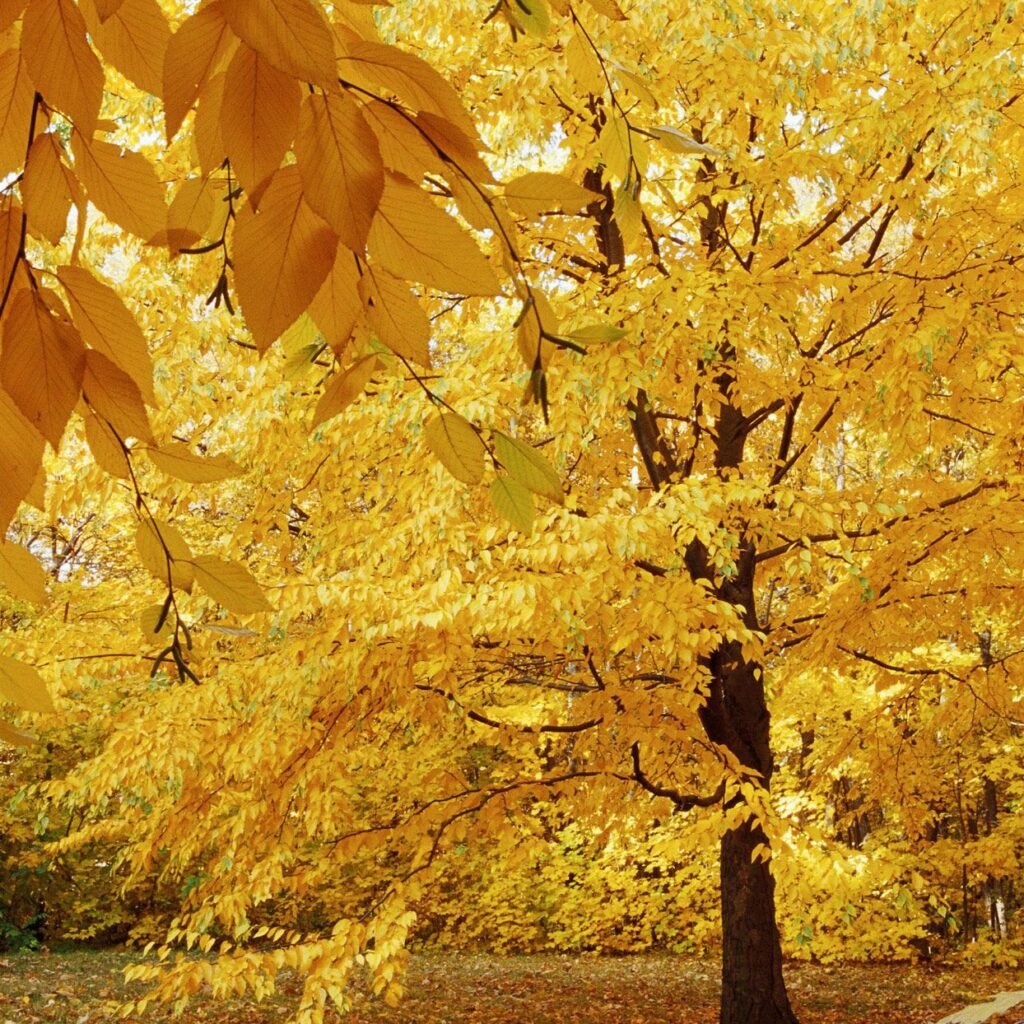
Unlike the other trees on this list, the bald cypress is a deciduous conifer, meaning it has needles instead of broad leaves—but it still delivers spectacular fall color.
Fall Color Display
- Needles turn from soft green to rusty orange and copper tones.
- Creates a warm, earthy glow that stands out among other fall trees.
- When planted in groups, bald cypress trees create breathtaking scenery.
Growing Conditions
- Hardiness Zones: 4–10
- Soil: Thrives in wet or swampy areas but also grows well in average soils.
- Sunlight: Full sun for best growth and color.
Benefits and Uses
- Known for their distinctive “knees” (woody root structures that rise above the soil or water).
- Provide erosion control in wetland areas.
- Strong, rot-resistant wood historically valued for construction.
Why It’s a Top Choice
The bald cypress offers something different from typical broadleaf trees—its feathery needles create soft, glowing autumn scenery. It’s especially stunning near ponds, rivers, or lakes.
Tips for Maximizing Fall Foliage Color in Your Landscape
While genetics play a major role in fall color, certain factors can influence how vibrant your trees appear:
- Choose the Right Location: Plant trees in full sun for the brightest colors.
- Maintain Soil Health: Fertile, well-drained soil enhances color development.
- Water During Dry Spells: Drought stress can cause leaves to drop early.
- Prune Thoughtfully: Remove dead branches but avoid over-pruning, which reduces foliage mass.
- Plant Multiple Species: For a prolonged and varied fall display, mix early-changing trees like red maples with later changers like ginkgo.
Conclusion
Fall foliage is one of nature’s most breathtaking spectacles, and the right trees can bring that beauty to your own backyard. The sugar maple dazzles with fiery gradients, the red maple glows with scarlet hues, the sweetgum paints a rainbow, the ginkgo shines like gold, and the bald cypress warms landscapes with its copper tones.
Planting these trees not only enhances seasonal beauty but also adds ecological value, shade, and resilience to your landscape. By carefully selecting and caring for them, you’ll enjoy stunning fall colors for generations to come.
So, the next time autumn arrives, step outside and marvel—not just at the changing season, but at the timeless artistry of these trees.
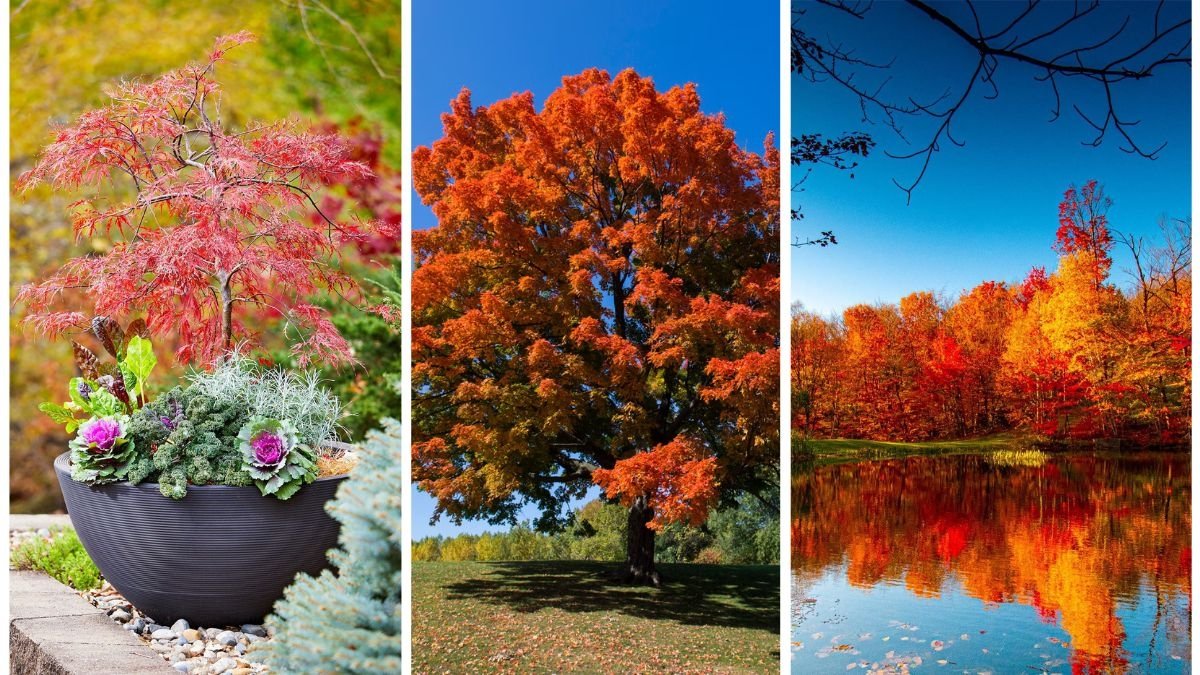
Leave A Comment